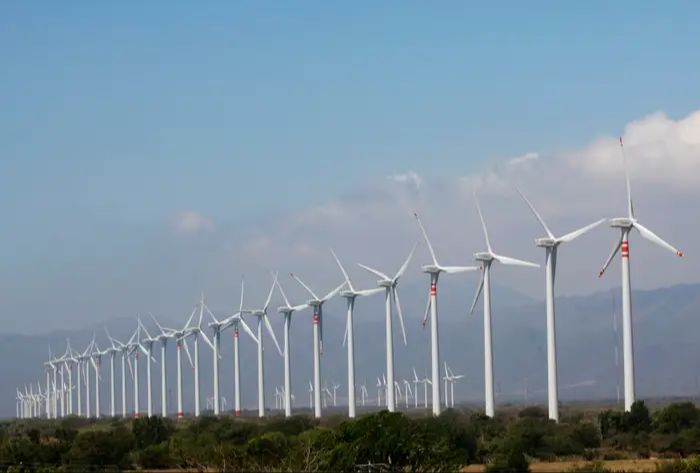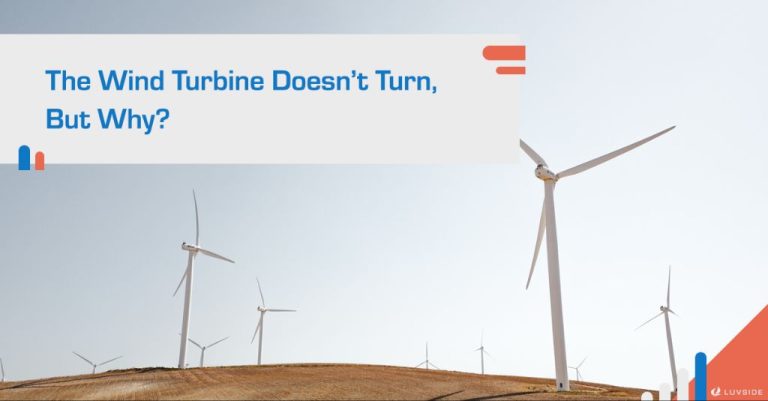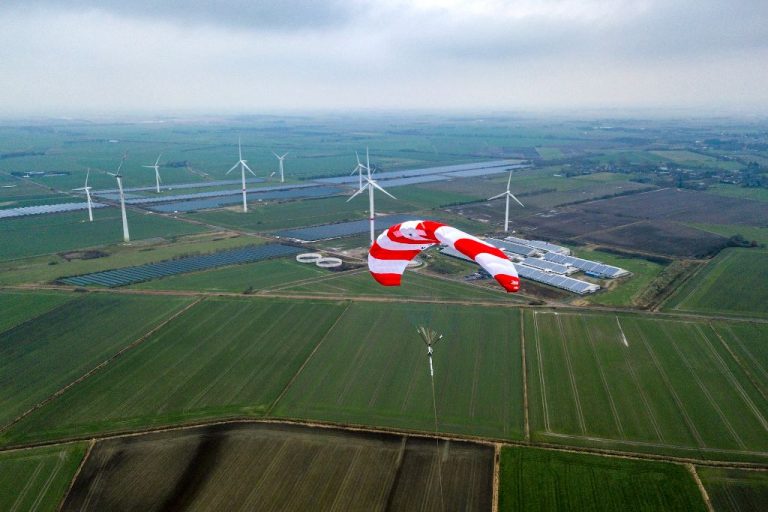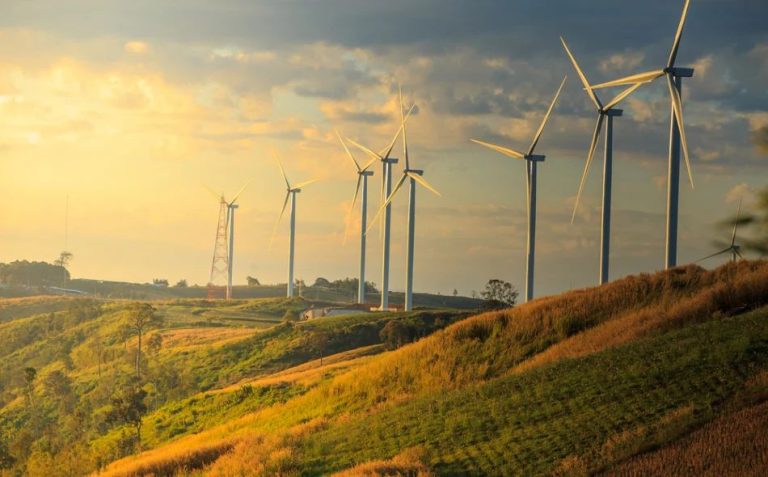What Makes It Really Windy?
Wind is the natural movement of air caused by differences in atmospheric pressure. We experience wind every day in the form of light breezes or strong gusts. But what makes it really windy at times? When wind speeds exceed around 25-30 mph, conditions start feeling unpleasantly or even dangerously windy to most people. In this article, we’ll explore the major factors that create higher than normal winds and lead to blustery or extreme wind events.
Understanding the causes of windy conditions can help explain weather forecasts, prepare us for storms, and provide insights into larger atmospheric patterns. While high winds can disrupt daily life, they are a natural part of earth’s climate system with complex and interconnected causes.
What is Wind?
Wind is the movement of air from areas of high pressure to areas of low pressure. It is caused by differences in atmospheric pressure, which are due to uneven heating of the earth’s surface by the sun. As the sun heats the earth’s surface, it warms the air above it causing it to expand and become less dense. The warm, less dense air rises creating an area of low pressure. Cooler, denser air flows in to replace the rising air, creating wind.
The greater the difference in atmospheric pressure between two locations, the faster the wind flows. On a global scale, the atmospheric circulation is driven by the rotation of the earth and energy from the sun. The earth’s rotation causes winds to curve due to the Coriolis effect. The atmospheric circulation transports heat from the equator to the poles, influencing weather and climate patterns around the world.
Global Wind Patterns
Winds are caused by differences in air pressure around the world. Air flows from areas of high pressure to areas of low pressure. This sets up global wind patterns called wind belts that encircle the planet.
The three major wind belts on Earth are the trade winds, westerlies, and polar easterlies. The trade winds blow from the northeast in the Northern Hemisphere and the southeast in the Southern Hemisphere near the equator. The westerlies blow from the southwest in the Northern Hemisphere and the northwest in the Southern Hemisphere at mid-latitudes. The polar easterlies blow from the northeast in the Northern Hemisphere and the southeast in the Southern Hemisphere near the poles.
These wind belts are caused by several factors. The heating and rotation of the Earth sets up circulation cells in the atmosphere transporting hot air from the equator to the poles. The Coriolis effect also deflects winds to the right in the Northern Hemisphere and to the left in the Southern Hemisphere due to Earth’s rotation.
Major surface features like mountain ranges and large temperature differences between land and ocean also impact wind patterns around the globe. The jet stream found in the upper atmosphere is driven by the temperature contrast between polar and tropical air masses.
Local Wind Patterns
Local winds are caused by the differences in temperature and pressure between two adjacent areas. As the sun heats up the land, the air above it expands and rises. The cooler and denser air over the sea then rushes in to take its place, creating a sea breeze. At night, the opposite effect happens as the air over the land cools down faster than the sea. This causes the air over the sea to expand and move inland, creating a land breeze.
Other local winds are also caused by temperature differences, such as valley breezes, which blow up valleys during the day and down valleys at night. Mountain breezes and slope winds work on a similar principle, driven by the temperature differences between the mountains and the surrounding landscape.
Local winds can also be caused by topographic funneling, where gaps between mountains and hills concentrate winds into narrow channels. Examples are the Mistral in France, which blows through the Rhone valley, and the Santa Ana winds of California, which blow from the deserts over the mountains to the coast.
Urban heat island effects can also drive local winds, as the warmer urban area draws in cooler air from surrounding rural areas during the night. Overall, local wind patterns add complexity and variability to winds across smaller geographic regions.
Geography
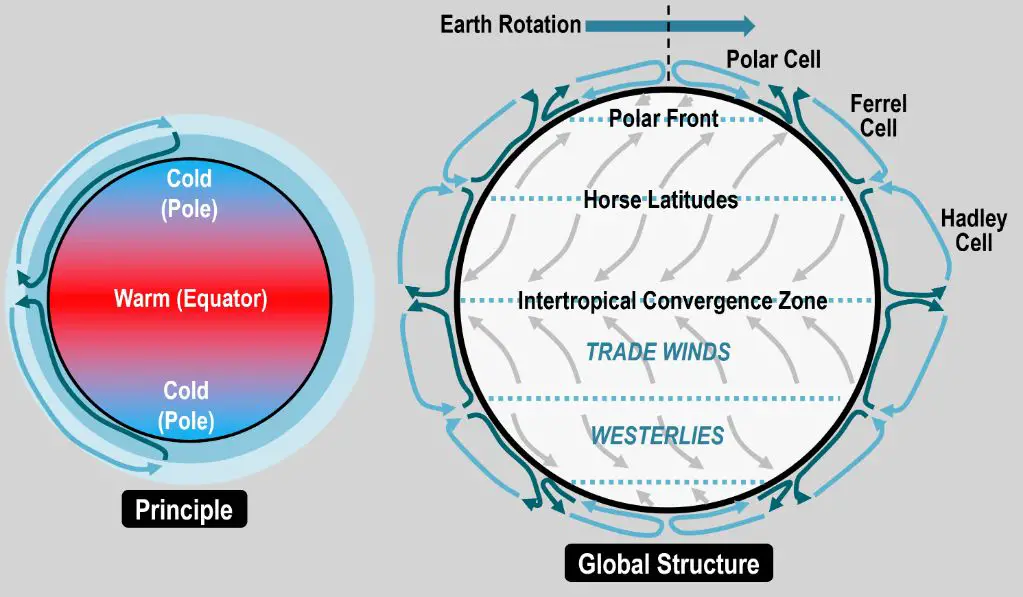
A geographical area’s terrain and landscape significantly influence local wind patterns. Mountains, valleys, and bodies of water can all channel winds in various directions or block airflow entirely. Elevation also plays a major role. Places at high elevations like mountain peaks experience stronger, more persistent winds than low-lying areas like valleys.
The uneven heating of different land and water surfaces is another geographic factor affecting winds. For example, during the day, land areas heat up faster than large bodies of water. The warm air over land rises, while cooler air from over the water moves in to replace it. This creates onshore breezes near coastlines. At night, the pattern reverses as the land cools faster, causing offshore breezes.
Landforms can also create wind tunnel effects, accelerating winds through mountain passes, canyons, and gaps between buildings in urban areas. On a global scale, major mountain ranges like the Rockies and Alps act as barriers, deflecting prevailing winds around them and channeling air currents through mountain passes. Overall, geography creates complex patterns as winds interact with various landforms and terrain features.
Weather Events
Certain weather events like storms can create very windy conditions. Storms are formed when warm, moist air interacts with colder, drier air. This interaction causes the warm air to rapidly rise, creating an area of intense low pressure. Air rushes in to fill this low pressure zone, creating very strong winds.
Some examples of storm systems that generate high winds:
- Hurricanes – Among the most powerful storms on Earth, hurricane winds can reach over 157 mph.
- Thunderstorms – The gust front ahead of thunderstorms can whip up destructive straight-line winds.
- Derechos – Long-lived wind storms that form in lines of intense thunderstorms.
- Tornadoes – Rotating columns of air that extend from thunderstorms, with winds over 200 mph.
The stronger the contrast between the colliding air masses, the more intense the winds will be within these storm systems. This explains why certain regions prone to extreme summer heat and winter cold tend to experience more storms and higher wind speeds.
Climate Change
Climate change has a significant impact on wind patterns around the world. As global temperatures rise due to increased greenhouse gas emissions, wind currents are being altered.
Warming temperatures cause shifts in air circulation patterns which change the strength and direction of winds. Warmer air holds more moisture, so some areas are experiencing more intense storms and hurricanes with strong gusts. Meanwhile, other areas may see calmer winds as circulation patterns stabilize in a warmer climate.
Changes in temperature gradients between the poles and equator alter pressure systems like the jet stream. A wavier jet stream leads to more variable weather patterns with extreme winds. Melting polar ice also impacts wind patterns. With less ice reflecting sunlight, warmer ocean water absorbs more heat leading to shifting marine winds.
Climate change models project increasing wind speeds globally by the end of the century as temperatures continue to rise. Already, wind power density has increased in places like Europe and the US. While taking advantage of stronger winds for renewable energy opportunities, we must also prepare for the impacts of more extreme wind events due to climate change.
Measuring Wind Speed
There are several instruments used to measure wind speed, which allow meteorologists and researchers to quantify wind conditions and study wind patterns over time.
Some common instruments include:
-
Anemometers – these are devices with rotating cups or propellers that spin with the wind. They measure wind speed based on rotations per minute.
-
Weather vanes – these have fins that align with wind direction and can be used to determine wind speed based on calibration.
-
Doppler radar – this can bounce signals off raindrops to estimate wind speed and direction based on the change in frequency.
-
Doppler LIDAR – uses laser signals instead of radar to measure the Doppler shift and estimate wind conditions.
-
SODAR – stands for Sonic Detection and Ranging. It measures wind speed and direction by bouncing high-frequency acoustic signals off wind currents.
-
Weather balloons – measure wind speed and direction as they rise through the atmosphere.
Research-grade instruments are carefully calibrated and allow for very precise wind speed measurements. Consumer-grade anemometers may be less precise but can still provide good estimates for basic weather monitoring.
The most common units used to report wind speeds are miles per hour (mph), knots (nautical miles per hour), meters per second (m/s), kilometers per hour (km/h), and Beaufort scale numbers.
Impacts of Wind
Wind can have significant impacts on human society, buildings, and the natural environment. Strong winds can damage homes and infrastructure, disrupt transportation networks, and cause injuries or loss of life.
Buildings may suffer roof damage, broken windows, or complete structural failure when subjected to extreme wind forces. Bridges, powerlines, phone and internet cables can also be brought down during wind storms. Falling trees and flying debris carried by powerful winds present further hazards.
Wind impacts transportation by making driving difficult and dangerous, restricting airport operations, and disrupting shipping lanes. Prolonged strong winds can prevent first responders from accessing those in need.
In nature, winds can damage or uproot trees. Wind erosion degrades soil over time. Wind carries seeds, pollen and nutrients around the planet. Wind patterns also influence ocean currents and the global climate.
However, wind energy is seen as a renewable resource. Wind turbines convert wind energy into electricity with minimal pollution. Overall, understanding the impacts of wind helps us forecast risks, harness benefits, and protect lives and property from potential damage.
Conclusion
In summary, wind is caused by the movement of air from areas of high pressure to areas of low pressure. The strength and direction of wind depends on many factors like global wind patterns, local geography, weather events, and climate change. Strong winds can be produced by phenomena like hurricanes, tornadoes, and downslope windstorms. Human activities also influence wind patterns and speeds around the world. While wind can have destructive impacts, it can also be harnessed as a renewable energy source.
Wind is a complex and constantly shifting phenomenon, but modern science and meteorology help us measure, predict, and understand wind forces. With advanced computer models and wind measurement tools, we can better forecast wind conditions and prepare for high wind events. As we learn more, we may be able to develop effective strategies to protect against wind damage or utilize wind as a sustainable power source. Though many mysteries around wind remain, continued research and analysis will uncover new insights into this integral part of our planet’s weather and climate.

